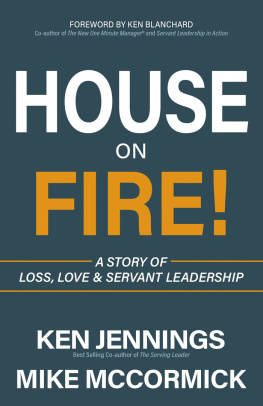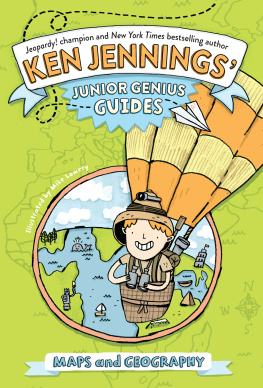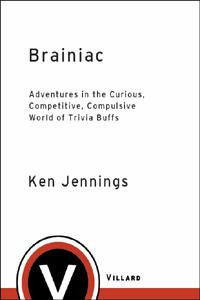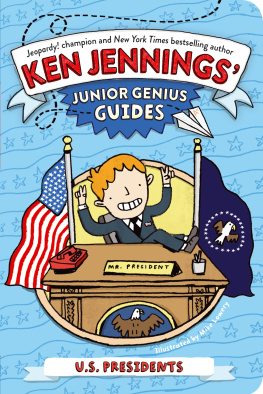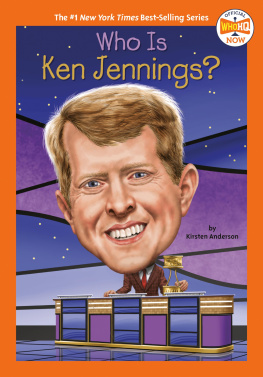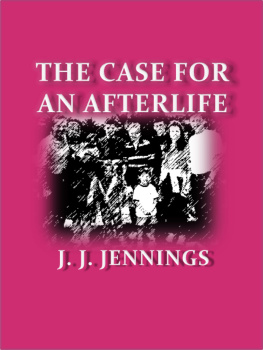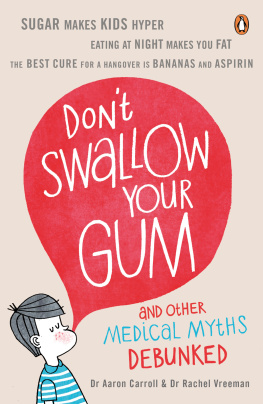
Thank you for purchasing this Scribner eBook.
Join our mailing list and get updates on new releases, deals, bonus content and other great books from Scribner and Simon & Schuster. CLICK HERE TO SIGN UP or visit us online to sign up at
eBookNews.SimonandSchuster.com

Contents
For Dylan and Caitlin.
I hope someday you have children just like you.
Preface
I was sitting in my parents kitchen not long ago when my young son, Dylan, came whipping around the corner with a grape Tootsie Pop firmly clamped in his teeth.
Whoa, slow down! I said. What if you tripped and fell on your face? The lollipop stick would get jammed right through the roof of your mouth!
Dylans eyes got wide. Could that really happen?
I had to admit, I had no idea. This was something my mother had told me repeatedly while I was growing up, but its not like Id ever dug into the relevant medical literature or consulted with surgeons. What do you do when a nine-year-old calls your bluff?
Of course its true! I told him. Go sit down at the table until youre done with your lollipop. Just like with terrorists and bears! You cant show any doubt or weakness!
I found my mom and asked her to back me up: its true about lollipop sticks and horrific puncture wounds, right? She had no idea. Thats what Grandma used to tell us, she said. I think it also happens in a Chaim Potok novel. The Chosen, maybe?
I was horrified. A fact Id confidently passed along to my trusting children turned out to be thirdhand rumor confirmed only by a novelist ? (A novelist-slash-rabbi, but still. And it turns out the lollipop injury isnt in The Chosen, anyway. Its from In the Beginning .) What else had I been inadvertently misleading them about? Washing behind their ears? Chewing with their mouths closed? Was our whole life together a huge lie ?
Thats the dirty secret of parenting: its a big game of Telephone stretching back through the centuries and delivering garbled, well-intended medieval bromides to the present. Possible misinformation like the lollipop thing never gets corrected; it just goes into hibernation for a few decades and then jumps out to snare a new generation, like a seventeen-year cicada. Parents find themselves in these factual blind alleys because they have no other resource than the dimly remembered thirty-year-old lectures of their own childhoods.
Until now! In this book, Ive compiled 125 of the nagging Mom- and Dad-isms that we all grew up with, and then Ive meticulously researched the scientific evidence behind them. On some, Im happy to deliver a clear-cut verdict one way or another: either confirming them as True or debunking them as False. More often, though, the truth falls somewhere in between: true with an if, false with a but. Some of these parental clichs turn out to be accidentally right for the wrong reason (see Eat your crusts, thats where the vitamins are! on page 90 or Never wake a sleepwalker! on page 165). Others are time-tested and unimpeachably sensible... but still dont always hold up well in real life (see Dont talk to strangers! on page 57). So there are plenty of Mostly False and Possibly True verdicts in here as well.
Much of the gray area is a matter of risk assessment. Human beings, as a rule, are terrible students of probability. As a result, we develop paranoid, nightmare-inducing phobias about the unlikeliest things (plane crashes, strangers kidnapping our kids) while ignoring far more pressing risks (heart disease, car accidents). Ive used the best statistics available to try to help you gauge the relative risks of different childhood activities, whether thats going outside barefoot or swallowing gum or running with scissors, but the final decision is always going to be a judgment calllike so many other elements of parenting, an art and not a science.
Take my moms lollipop fear, for example. There is a fair bit of medical research on pediatric oropharyngeal trauma, which is what doctors call it when kids bash up their mouths on some foreign object. A 2006 study out of Edmonton estimated that fully 1 percent of childhood injuries are oropharyngeal traumas, and another study from Pittsburghs Childrens Hospital found that puncture wounds were indeed common outcomes. Twenty-nine percent of the injuries were serious: a large laceration, or a fistula (eww) or mucosal flap (dont know what that is, but double eww). Brain damage and death are extremely rare complications, but both have happened.
So clearly I was justified in telling my son to sit down while finishing his lollipop, right? Well, maybe and maybe not. The Pittsburgh study also notes that most cases are minor and heal with no medical intervention at all, and then runs down the items that are most likely to cause this kind of trauma. Lollipops were one of the rarest culprits, causing less than 3 percent of the injuries studied and vastly outnumbered by pencils, musical instruments, toys, sticks, and so on. The hospital treated just one lollipop case every two years, on average. Meanwhile, the Tootsie Pop company alone makes twenty million lollipops per day . I guarantee that lots of those lollipops get eaten by kids on the goand yet injuries are rare. So the numbers suggest that, compared to lots of other common day-to-day activities, eating-a-lollipop-not-sitting-down isnt terribly reckless. Theres a fine line between making kids cautious about dangerous horseplay and just making them panicky about totally normal stuff, like moving around with a pencil or harmonica or something in their mouths.
Parents love their kids, of course, and would like to keep them safe from everything. But even if that were an achievable goaland its notit might not be great in the long run for the poor kids involved. A 2009 Time magazine cover package on helicopter parents followed the first wave of hypercushioned, overparented American children into adulthood, and the results were depressing: mommy webcams in college dorms, employers like Ernst & Young preparing parent packets for the pushy parents of new twentysomething hires. By trying to protect our kids from every little thing, we may have created a generation of kids and young adults who dont feel confident about anything . So the risks need to be measured against the rewards. What if theres a 0.95 percent chance that a kid who bikes to school will get in a wreck, but a 95 percent chance that a kid whos not allowed to bike to school will grow up more tentative, complacent, lazy, and/or unhappy, because riding your bike to school is awesome? I feel like those percentages might not be that far off.
So I hope this book serves as a reality check for potentially jittery parents. But even if you dont have kids right now, you presumably were (or even are) one yourself. In that case, I hope this book helps inoculate you against the crazy things parents somehow still believeand when you take away the authoritative intonation, lots of parental wisdom is pretty nuts. Put butter on a burn? Wear a hat if your feet are cold? Drink eight glasses of water a day? Is that even possible?
If you really want to know how silly much of our parental nagging sounds, ask someone from a different culture what parents harp on there. My Korean friends werent allowed to sleep with an electric fan in their rooms, because a fan, they were told, would somehow asphyxiate them while they slept. In Russia, kids are warned not to sit on cold surfaces, or theyll freeze their gonads and wind up sterile. Germans and Czechs hear from a young age that they should never drink water after eating fruit, or theyll get a bellyache. Filipino children dont get to wear red when its stormy, because red clothing attracts lightning. A friends Iranian mother used to warn her against ever inhaling a cat hair. If you get one caught in your throat, she said, youll just keep vomiting repeatedly until you die . Im not poking fun at these superstitionsI just want you to realize how ridiculous our own old wives tales would sound to someone whos never heard them before. Wait an hour after eating to swim? If you cross your eyes, they might stay that way? How, an outsider might wonder, does anyone actually believe this stuff ?
Next page

